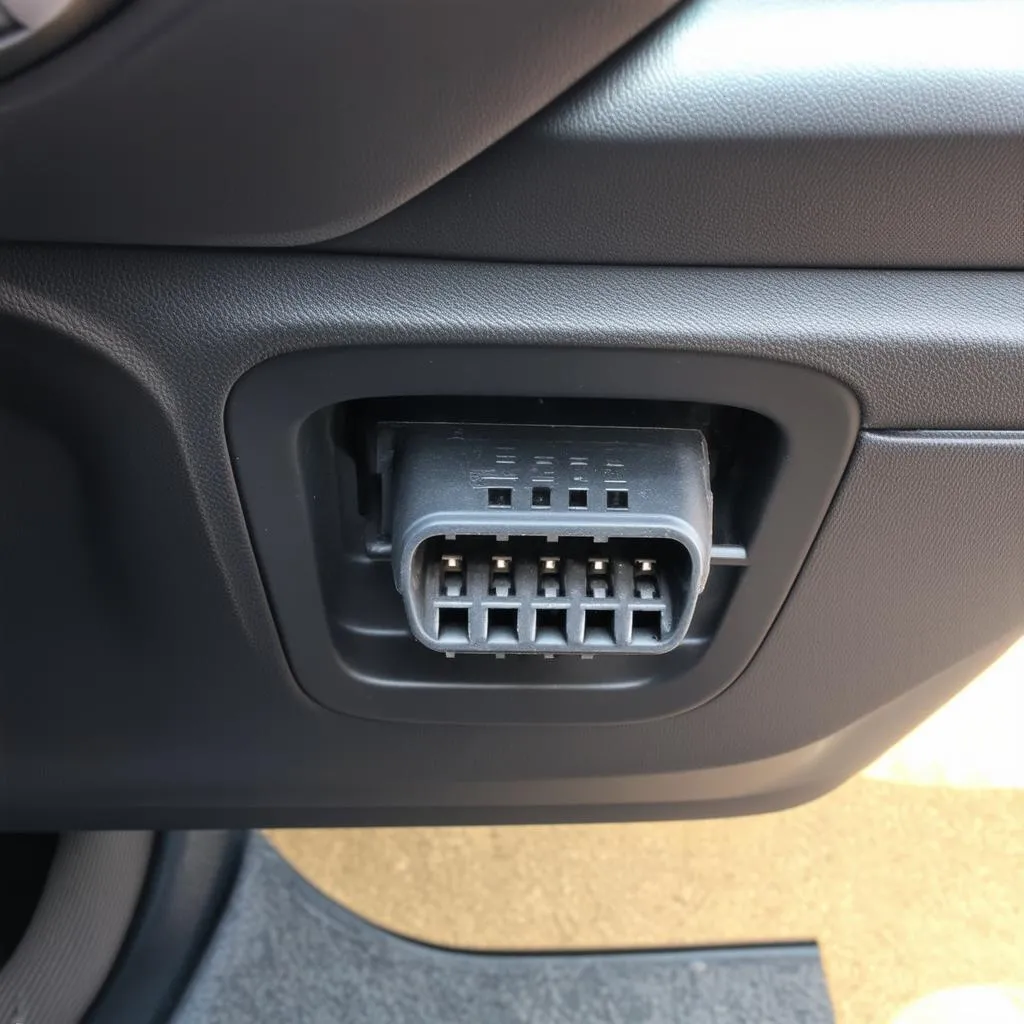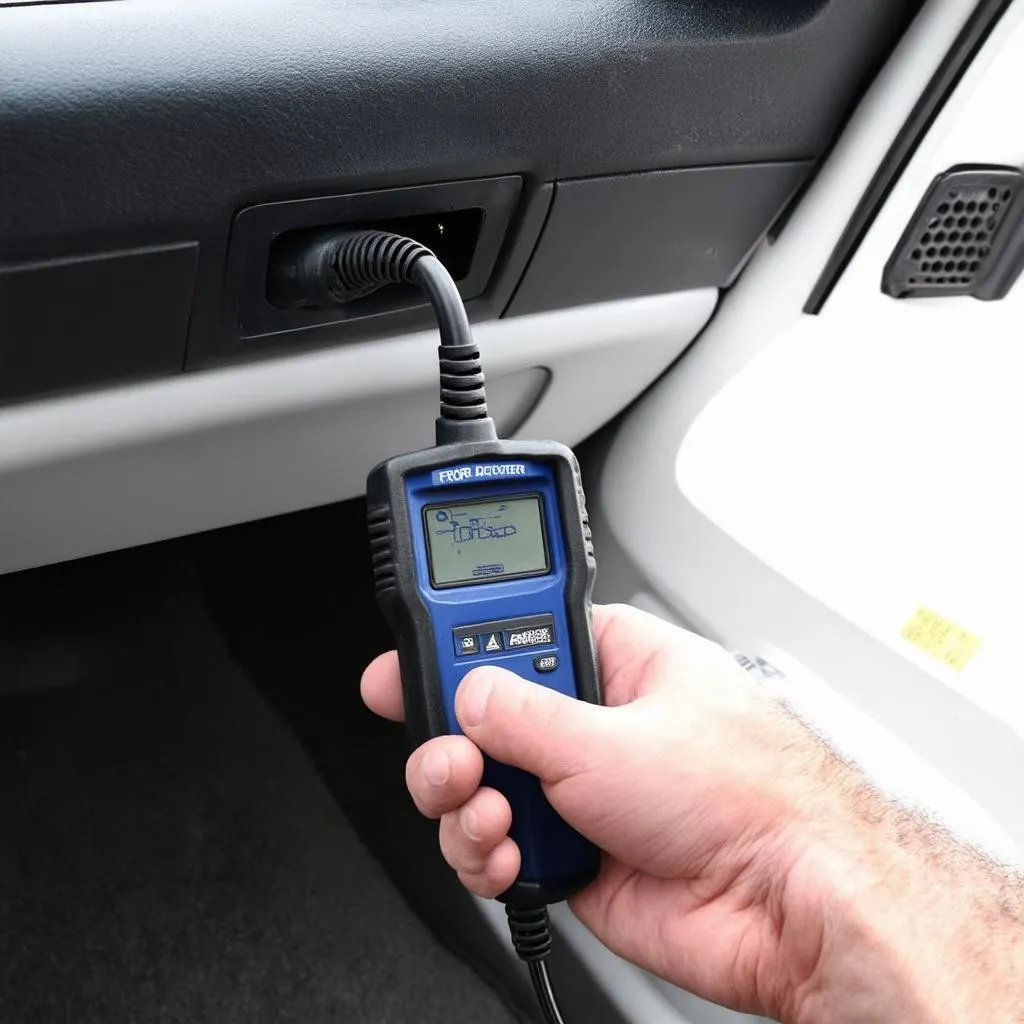Ever feel like you’re playing hide-and-seek with your car’s OBD port? You’re not alone. Picture this: it’s a Friday night, and you’re itching to hit the road for a weekend getaway. You’ve packed the car, the playlist is ready, but then it hits you – the check engine light is on! You pull out your trusty OBD2 scanner, ready to diagnose the issue, but there’s one problem: you can’t find the darn port!
Don’t worry, we’ve all been there. This article is your roadmap to easily locate the OBD port on your 2002 Ford Explorer.
Decoding the Mystery: Why is Finding the OBD Port Important?
Before we delve into the specifics, let’s understand why this little port is such a big deal. The OBD, or On-Board Diagnostics, port is like the communication hub of your car. It allows you to connect diagnostic tools, like a scanner, to retrieve vital information about your vehicle’s health.
Think of it as a window into your car’s soul. Mechanics and DIY enthusiasts alike rely on the OBD port for:
- Diagnosing engine problems: Identifying the root cause of that pesky check engine light.
- Monitoring performance: Analyzing engine parameters like fuel efficiency and emissions.
- Clearing error codes: Resetting the check engine light after repairs.
In essence, the OBD port empowers you to understand your car better and potentially save on costly mechanic visits.
Unmasking the 2002 Ford Explorer OBD Port Location
Now, let’s get down to business. The OBD2 port in your 2002 Ford Explorer is typically located under the dashboard, on the driver’s side, near the steering column.
Here’s a simple breakdown:
- Sit in the driver’s seat and locate the area beneath the steering wheel.
- Feel around for a rectangular-shaped port, usually covered by a plastic cap.
- The cap might have “OBD” or “Diagnostics” printed on it for easy identification.
Pro-Tip: Still can’t find it? Consult your owner’s manual for a diagram or reach out to a Ford dealership for assistance.
 OBD Port Location
OBD Port Location
Troubleshooting Time: What if You Still Can’t Find It?
Sometimes, the port might be tucked away a bit further, or the previous owner might have moved it during modifications. If you’re still having trouble, don’t despair.
Consider these possibilities:
- Check higher up under the dashboard, closer to the fuse box.
- Inspect the area around the center console or beneath the ashtray.
- Look for a loose-hanging connector that might have become detached.
Expert Insight: “It’s important to be patient and thorough when searching for the OBD port,” says automotive expert Michael Carter, author of “The Complete Guide to Car Diagnostics.” “Don’t be afraid to use a flashlight and gently move wires around to get a clearer view.”
Beyond the Basics: The Importance of a Quality OBD2 Scanner
Locating the port is just the first step. To unlock the full potential of your car’s diagnostics, you need a reliable OBD2 scanner.
Here’s why:
- Accurate Readings: A quality scanner ensures you get precise data about your car’s systems.
- User-Friendly Interface: Easy-to-understand menus and displays make diagnosing issues a breeze.
- Advanced Features: Some scanners offer live data streaming, troubleshooting guides, and compatibility with smartphone apps.
Recommendation: For European cars, a dealer-level scanner designed specifically for European makes and models offers the most comprehensive diagnostic capabilities.
 OBD2 Scanner
OBD2 Scanner
Need Help with Your 2002 Ford Explorer?
Finding the OBD port is crucial for maintaining your vehicle’s health and performance. Remember, a well-maintained car is a happy car!
If you’re still experiencing difficulties or need assistance with diagnostics, don’t hesitate to contact our expert team via Whatsapp at +84767531508. We offer 24/7 support and can help you get back on the road with confidence.
Happy driving!